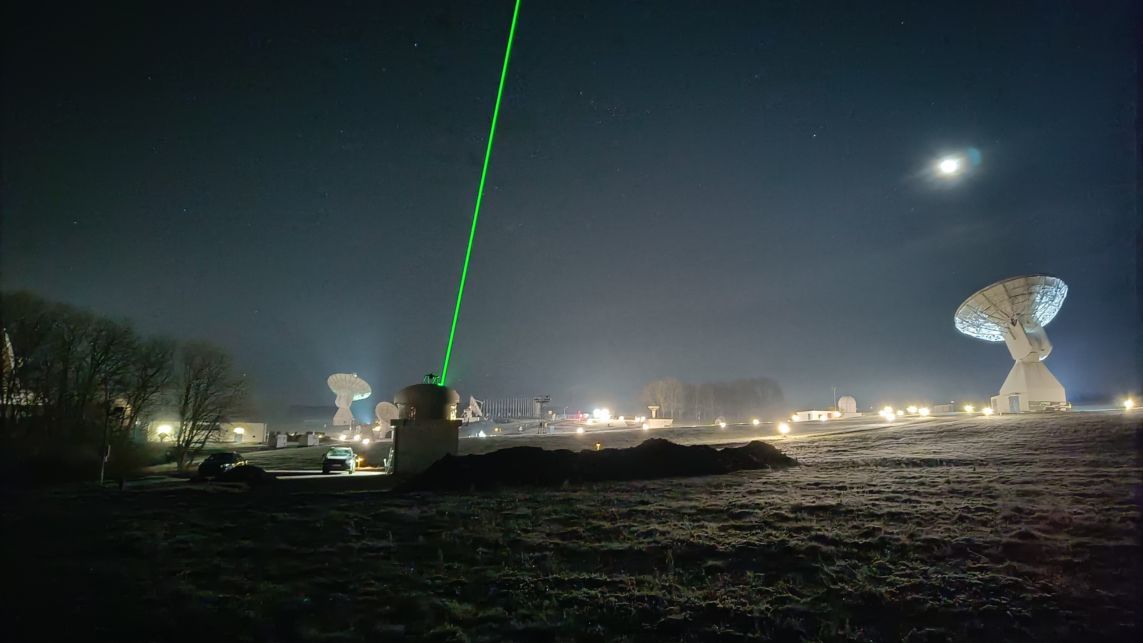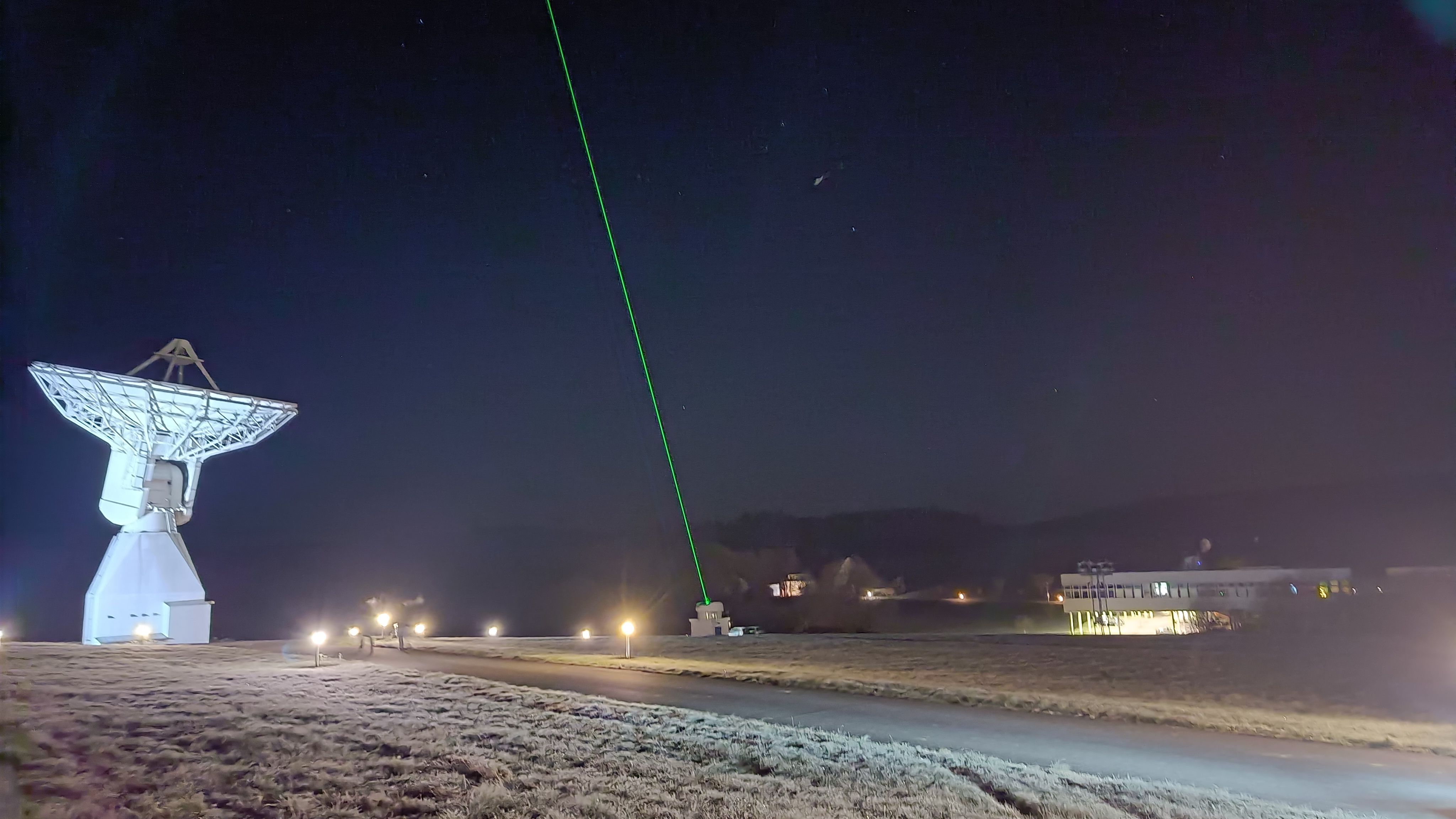AMOS successfully completed the test of a new adaptive optics (AO) system dedicated to optical communications between earth and space.
This project, financed by the Walloon Region and executed in collaboration with the ULiège STAR team, the UCLouvain ICTEAM, the Centre Spatial de Liège, and Redu Space Services, aimed at developing a robust adaptive optic system for optical communications. The purpose of this project is to move the adaptive optic system from the field of astronomy to a commercial application where robustness matters as much as efficiency.
For this purpose, AMOS designed and built a robust 80cm telescope to allow proper testing of the AO system. The high-precision mount is able to carry heavy equipment on its Nasmyth platform, while keeping a heavy laser beacon kept aligned with the telescope on the other side.

The AMOS SALTO telescope equipped with a robust Adaptive Optics and a Rayleigh scattering Laser Guide Star
AMOS installed the 80cm telescope in the Redu telecommunication station in Belgium. The system is hosted in a small shelter offering full visibility of the sky. The robust mount was equipped with the full AO system, including a powerful laser to allow the creation of an artificial star. The latter is a point of light created by the Rayleigh scattering of light in the atmosphere, using a laser shining at the right frequency (green laser).
During the end of 2022, the system was tested in actual operational conditions. Either with the natural light of a start collected by the telescope, or by using the artificial guide star. This is why some could witness green laser beams being fired in the Redu sky this autumn. Those tests were performed in collaboration with aviation authorities to ensure that the laser would pose no threat to passing aircrafts.

Test in Redu of the AO system with artificial guide star at full power
The results were fully conclusive. The system was able to work without complex tuning and could lock in a very short timeframe on the target. The atmospheric turbulences were then compensated, creating a point-like image of the target despite a poor seeing during the tests. This system will be fundamental for keeping the telecommunication optical link operational between the earth and a satellite in orbit in most clear-sky conditions. On the opposite, adaptive optics systems for astronomy are designed to achieve optimal compensation in sites and conditions where the seeing is already reasonably good.
AMOS, thanks to the expertise of its partners, is among the first commercial companies in Europe having successfully demonstrated a fully operational prototype of a Laser Guided AO system in realistic environmental conditions. With such success, AMOS and its partners are now equipped with a powerful AO concept that can be further integrated in AMOS’ telescopes. This could be used to improve optical communications with satellite in earth orbits, but also for the future moon gateway, or with communications with deep-space probes around planets like Mars for example.
 info@amos.be
info@amos.be
 +32 4 361 40 40
+32 4 361 40 40


 see all
News
see all
News